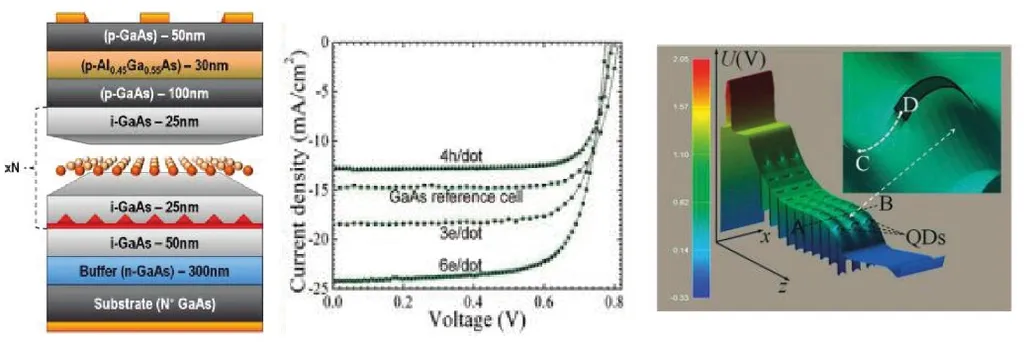Researchers from Yerevan State University in Armenia and the University of Iceland have collaborated on a study aimed at enhancing the efficiency of intermediate-band semiconductor solar cells. This research, published in the journal “Physical Review Applied,” focuses on the integration of quantum dot superlattices into solar cell technology.
The team developed a multiscale approach to model an intermediate-band solar cell based on a gallium arsenide (GaAs) and gallium aluminum arsenide (GaAlAs) quantum dot superlattice. Their framework combines theoretical calculations of the superlattice band structure and absorption coefficient with experimental interband absorption data. This integrated methodology allows for realistic modeling of device performance.
The researchers identified an optimal superlattice constant of 14 nanometers, which yields a maximum solar cell efficiency of 13.3 percent. Increasing the superlattice constant beyond this point enhances the absorption peak related to the miniband but reduces the generation rate in the n-type region, leading to a net decrease in efficiency. This finding is crucial for optimizing the design of quantum dot superlattice-based solar cells.
The proposed approach, which integrates theoretical, experimental, and computational components, provides a reliable framework for assessing and improving solar cells based on quantum dot superlattices. This research offers practical applications for the energy sector by potentially increasing the efficiency of solar cells, making solar energy more viable and cost-effective.
The study, titled “Enhanced Efficiency of Intermediate-Band Semiconductor Solar Cells Embedded with Quantum Dot Superlattices,” was published in the journal “Physical Review Applied.” This research highlights the importance of interdisciplinary collaboration in advancing solar cell technology and contributing to a sustainable energy future.
Source: Physical Review Applied
This article is based on research available at arXiv.

